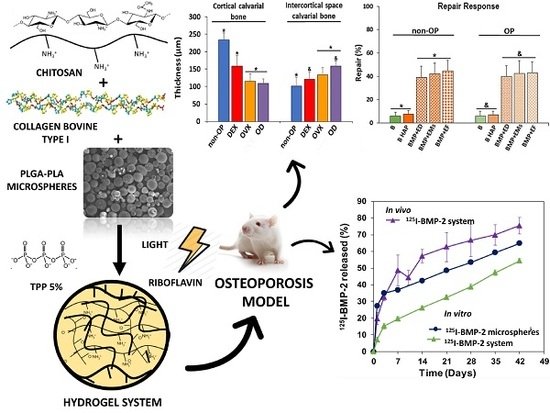Drug Delivery Systems
Preparation and
characterization of scaffolds and injectable gels for tissue engineering
applications.
The development of scaffolds able to mimic tissue physiology and morphology promoting an adequate tissue integration and regeneration is required for tissue engineering. These systems are also commonly used as platforms for drug delivery in order to achieve “in situ” release. These scaffolds are designed to play a dynamic role in the tissue regeneration process, acting as delivery systems for active substances while guiding tissue growth. Ideally, these 3D constructs should also allow their remodeling by cells modifying their properties in response to the environment and be degraded at the same time as the new tissue is formed.The drug delivery systems research team has obtained biodegradable polymeric scaffolds of different nature, pre-seeded with MSCs or not, containing different growth factors and providing tailor made cell morphology by modulating the polymer molecular weight. The obtained results demonstrated, in an 8 mm bone defect, the ability of the anabolic growth factor BMP-2 pre-encapsulated in extended-release microspheres to promote high tissue repair rate (60-90%). In addition, the development of stimulus-sensitive hydrogels capable of being injected into bone defects and focused on the induction of bone growth in osteoporotic rats, has allowed us to have experience in restoration of bone tissue homeostasis. The obtained complex polymeric systems showed advanced capabilities as drug release systems incorporating molecules with variable characteristics and even cells. In this way, the combination of BMP-2 and 17β-estradiol was capable of promoting bone regeneration in osteoporotic rats.
Segredo-Morales E, Reyes R, Arnau MR, Delgado A, Évora C. In situ gel-forming system for dual BMP-2 and 17β-estradiol controlled release for bone regeneration in osteoporotic rats. Drug Deliv Transl Res. 2018;8(5):1103-1113.
Segredo-Morales E, García-García P, Reyes R, Pérez-Herrero E, Delgado A, Évora C. Bone regeneration in osteoporosis by delivery BMP-2 and PRGF from tetronic-alginate composite thermogel. Int J Pharm. 2018;543(1-2):160-168.
Segredo-Morales E, Martin-Pastor M, Salas A, Évora C, Concheiro A, Alvarez-Lorenzo C, Delgado A. Mobility of Water and Polymer Species and Rheological Properties of Supramolecular Polypseudorotaxane Gels Suitable for Bone Regeneration. Bioconjug Chem. 2018;29(2):503-516.
Vayas R, Reyes R, Rodríguez-Évora M, Del Rosario C, Delgado A, Évora C. Evaluation of the effectiveness of a bMSC and BMP-2 polymeric trilayer system in cartilage repair. Biomed Mater. 2017;12(4):045001.
Del Rosario C, Rodríguez-Évora M, Reyes R, Simões S, Concheiro A, Évora C, Alvarez-Lorenzo C, Delgado A. Bone critical defect repair with poloxamine-cyclodextrin supramolecular gels. Int J Pharm. 2015;495(1):463-473.
Rodríguez-Évora M, García-Pizarro E, del Rosario C, Pérez-López J, Reyes R, Delgado A, Rodríguez-Rey JC, Évora C. Smurf1 knocked-down, mesenchymal stem cells and BMP-2 in an electrospun system for bone regeneration. Biomacromolecules. 2014;15(4):1311-22.
Rodríguez-Evora M, Reyes R, Alvarez-Lorenzo C, Concheiro A, Delgado A, Evora C. Bone regeneration induced by an in situ gel-forming poloxamine, bone morphogenetic protein-2 system. J Biomed Nanotechnol. 2014;10(6):959-69.
Rodríguez-Évora M, Delgado A, Reyes R, Hernández-Daranas A, Soriano I, San Román J, Evora C. Osteogenic effect of local, long versus short term BMP-2 delivery from a novel SPU-PLGA-βTCP concentric system in a critical size defect in rats. Eur J Pharm Sci. 2013;49(5):873-84.
Hernández A, Reyes R, Sánchez E, Rodríguez-Évora M, Delgado A, Evora C. In vivo osteogenic response to different ratios of BMP-2 and VEGF released from a biodegradable porous system. J Biomed Mater Res A. 2012;100(9):2382-91.
